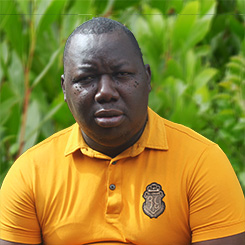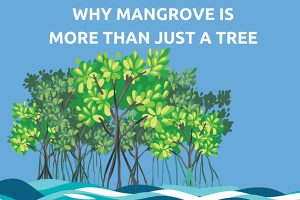Biodiversity is a measure of ecosystem health – a rapid biodiversity assessment to gain knowledge about the state of the Sherbro River Estuary (SRE) and Turtle Islands.
Biodiversity is often used as a relative measure of ecosystem health. Usually high level of biodiversity is desirable and provides an indication of the relative good health status of the ecosystem concerned. Hence, maintaining biodiversity is necessary to assure the survival and productivity of ecosystems and livelihoods. To take the right decisions and develop the needed policies and actions, fact-based knowledge about the state of biodiversity of our Key Biodiversity Areas is crucial. Over the years, several studies in the SRE have been focused on flora assessment. However, there is a limited investigation that provides up-to-date information on the biodiversity status of the SRE. Therefore, the Conservation Society of Sierra Leone (CSSL), with support from the African Conservation initiative (ACI) have conducted a Rapid Biodiversity Assessment (RBA) of the SRE including Turtle Islands to fill this gap by providing the needed and up-to-date information on the biodiversity status excluding flora of the SRE and Turtle Islands.
The West African Blue (WAB) locally known in Sierra Leone as the African Conservation Initiative (ACI) is a community-centric developer of blue carbon projects in West Africa. Its mission is to work closely with local communities to preserve, restore, and sustainably manage coastal ecosystems across West Africa, financed through the issuance of high-quality carbon credits. In the Sherbro River, ACI is currently developing a mangrove conservation and restoration project which will seek certification through the Verra Climate, Community and Biodiversity Standard (“CCB”).
Interview with Papanie Bai - Sesay, CSSL Senior Biodiversity and Project Manager
What is a Rapid Biodiversity Assessment and what is its goal, which animals could you observe?
A Rapid Biodiversity Assessment (RBA) is a brief data collection process on wildlife with specific targets in a clearly defined area during a short period of time. The goal of our RBA was to establish baseline data on threatened species in the Sherbro and Turtle Island for the ACI project.
We managed to observe the following species: West African Dwarf Crocodile, Sooty Mangabey, Lesser Spot-noise Monkey, Parrot, Wholly-necked Stock, and what made us all very happy; all five threatened Turtle species.
The data collected in this project will be used to inform decision makers on the values of the Marine Protected Area (MPA) and how to manage it.

Where was the Rapid Biodiversity Assessment Realized?
The RBA was conducted in the Sherbro River Estuary which is one of the MPAs in Sierra Leone with numerous islands, beautiful beaches and mudflats which are habitats to a lot of unique species and endangered wildlife.
Which methods where used and which were the most interesting findings?
The survey used transect walks, camera traps and Iocal ecological knowledge survey to collect data on the presence and distribution of species. Interesting findings from the survey include the record of the following species of conservation importance: Iesser spotted-nosed monkey, Sooty Mangabey, Wholly-necked stork, Green monkey, Timneh parrot, the five threatened Turtle species, Campbell’s monkey.
What was – for you personally – the most impressive moment of the trip?
For me, the transect walk in Dema was really impressive – in a negative way. It was completely empty of wildlife. I haven´t experienced something like that before. Another really new and worrying finding is that, many domestic dogs turned into wild dogs which is a completely new and unknown threat to the wildlife of this area.
As mentioned above, this RBA is only the first step to develop a biodiversity monitoring plan for the site including recommendations for wildlife protection and biodiversity conservation. The team who went on the assessment is sure about the urgent need to conserve this unique nature for the future.



